|
Soldier Settlers |
Soldier settler houses were originally
to be built of concrete, but as a stop gap measure limestone,
concrete and rocks were used. The houses consisted of three rooms, each 12
foot square. It was intended that these could be later converted to horse
stables, after a more established house could be built. Some of these
houses were still in use eighty years later, none ever having been
converted to stables. An extra bedroom, lounge and sleepout were added to the basic house in around 1928, when their third child was born. These extra rooms were all that was retained when the house was extensively rebuilt in the 1960's. |
|
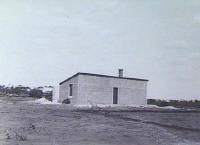 |
Typical three room settlers house built from concrete c1920. This is identical in style to Sando's first house. Three rooms each 12 foot square. Kitchen is at right end with chimney. Photograph courtesy of the State Library of South Australia. | |
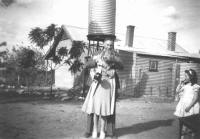 |
House c1944. | |
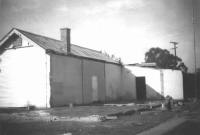 |
Original three rooms demolished to make way for rebuilding. Three retained rooms (on left) date from c1928 extensions. 5 June 1965. | |
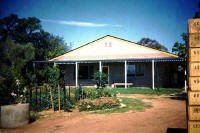 |
West side of new house, January 1967. Parts of the original 1920's house have been retained after extensive rebuilding. Sweat boxes stacked at right ready for packing dried fruit. | |
 |
Front of house c1970's | |
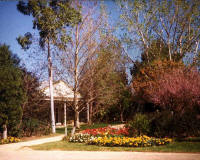 |
North west side c1970's | |
 |
Side garden showing crane once used for dipping grapes before drying. |
|
| c1919 | Trained at Pompoota near Murray Bridge for 12 months. Paid 5s a day, (30s a week) with free board and lodgings. Married men taking up residence on the farm were provided with a small residence free of rent and 17s in lieu of rations. Free
kerosene and firewood was also provided. Pompoota was created for training returned soldiers to settle the land by growing fruit trees, vines and lucerne. It opened on 27 March 1916 with 11 trainees, a manager, a foreman and a storeman. The first allocation of 19 blocks of land was 1 Feb 1917. Thirteen settlers arrived at Moorook on 13 April 1917. By 13 December the following statistics were recorded: 183 Applications processed 178 Applications approved 5 Applications not approved 1 Ticket issued since 29 Nov 1917 47 Left with allocations 47 Left without allocations 47 Remained at farm. Initially Gertrude Alice stayed at Morgan while Arnold went to establish the property at Monash. She followed later by catching the bus from Morgan to Monash. |
| 1920 | Lived at Monash in South Australia's Riverland. Worked as a horticulturist growing grapes, oranges, walnuts and apricots. Property consisted of a 24 acre fruit block and house as well as a separate non irrigated dry block with 24 acres of scrub. Soldier settler houses were originally built with 3 rooms 12 foot by 12 foot square which could be later converted to horse stables. The house was built from limestone concrete and rocks. |
| Arnold, Stewart and Keith built a tennis court near the house (later replaced by the first drying rack). | |
| c1928 | Added new rooms to house. These new rooms remained as a bedroom, lounge and sleep-out when the house was rebuilt in 1960's. |
| c1950 | The oranges were planted at the top of the house block. This was possible due to the installation of the first electric pump that allowed irrigation of the high land. |
| 1955 | Gertrude Alice moves to Berri leaving Ian and Dorothy to live in the house |
| Walnut trees half way down the block | |
| Three acres of lucerne at bottom of block | |
| About 3/4 to 1 acre of apricots planted at top of block near road | |
| 1963 | New rooms added to house (only sleep-out, master bedroom and lounge were retained) |
| c1979 | Block sold and house land subdivided |
| 1979 | House sold |